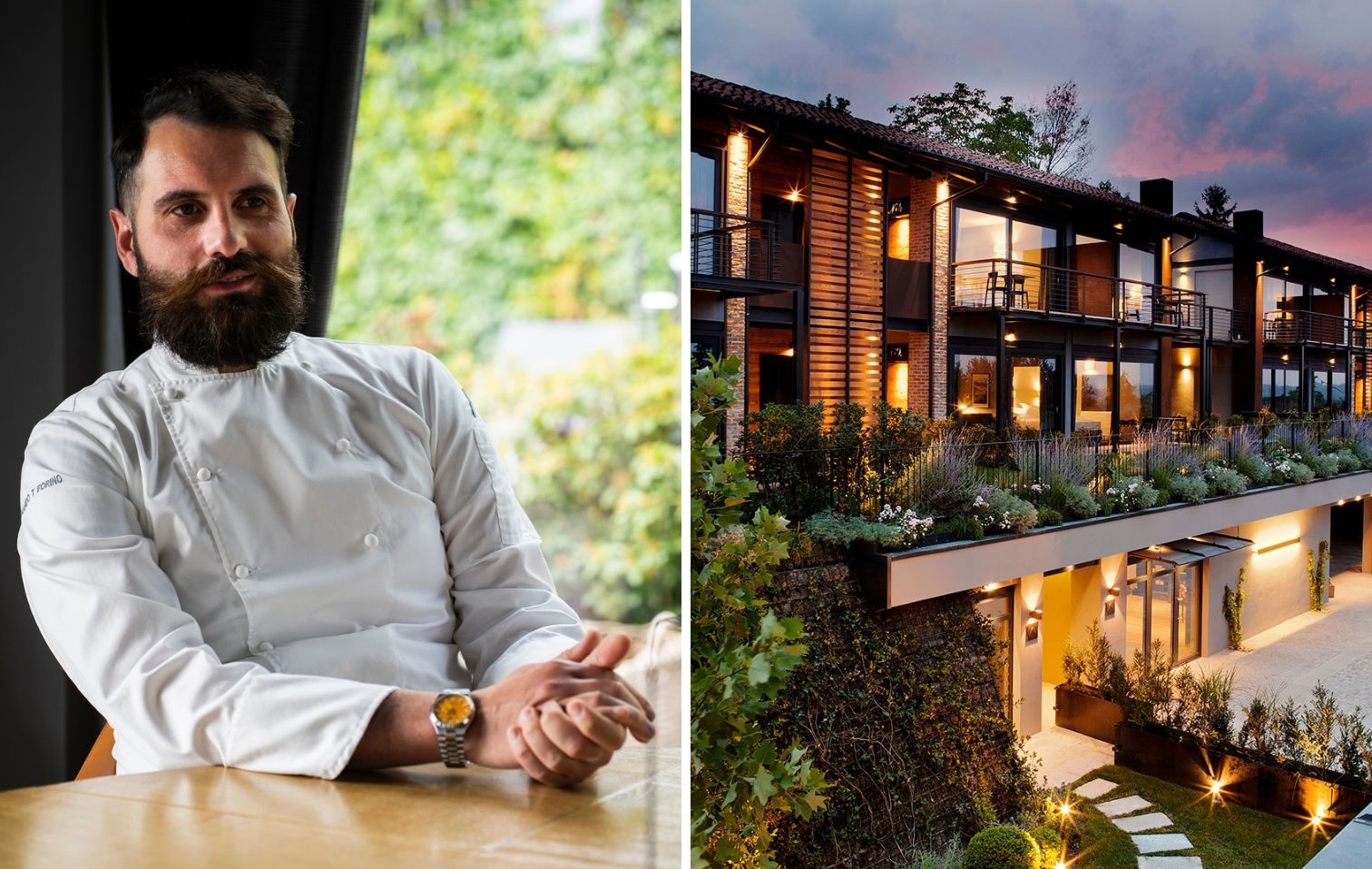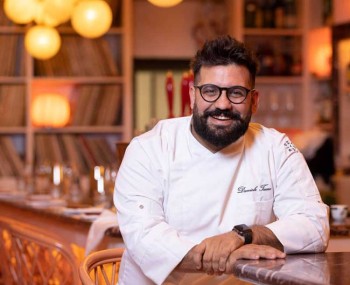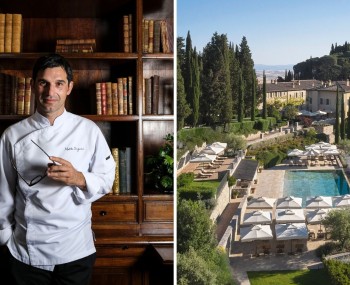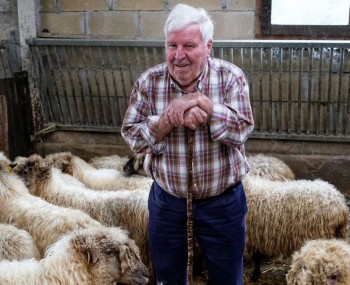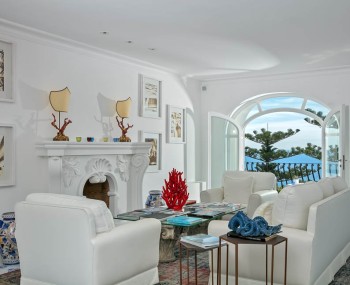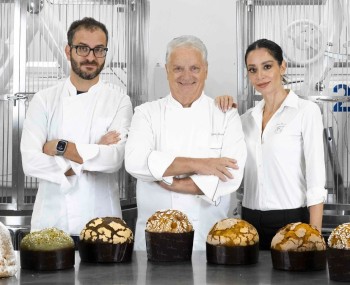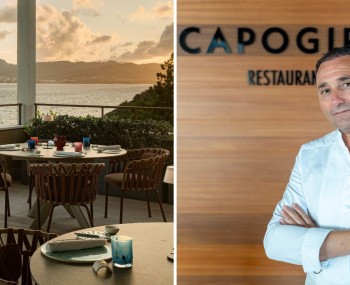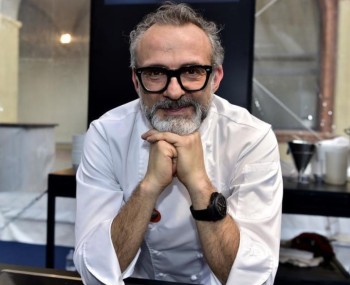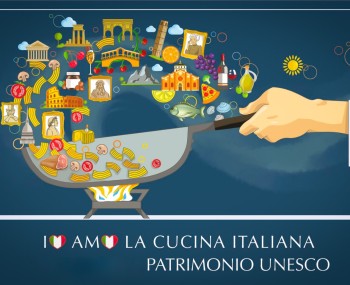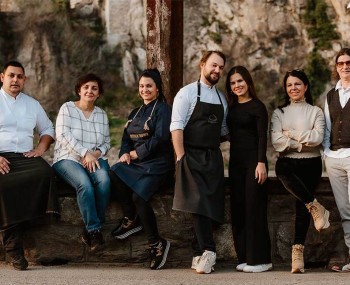Among the hills of the Langhe, a relais where haute cuisine sits alongside a bistro option and a virtuous environmental protection project. At the center is chef Fernando Forino's architecture of thought (and cuisine), erected on a solid foundation of familiarity with the pure ingredient. The waste? Not contemplated, from Piedmontese staples to tasting in 10 acts.
Photo credits: Officina 38, Stefano Caffarri
Five kilometers from the village that saw the birth of Barolo and 14 from the capital of truffles, a Relais where Piedmontese style coexists with an evolved cuisine still makes an impression. Locality La Morra, hamlet Annunziata, 311 inhabitants according to the latest census available online (yes, we googled it!): just a quarter of an hour's drive from Alba station to reach Arborina in an up and down of gentle vineyard slopes that sprout identity from every vine.
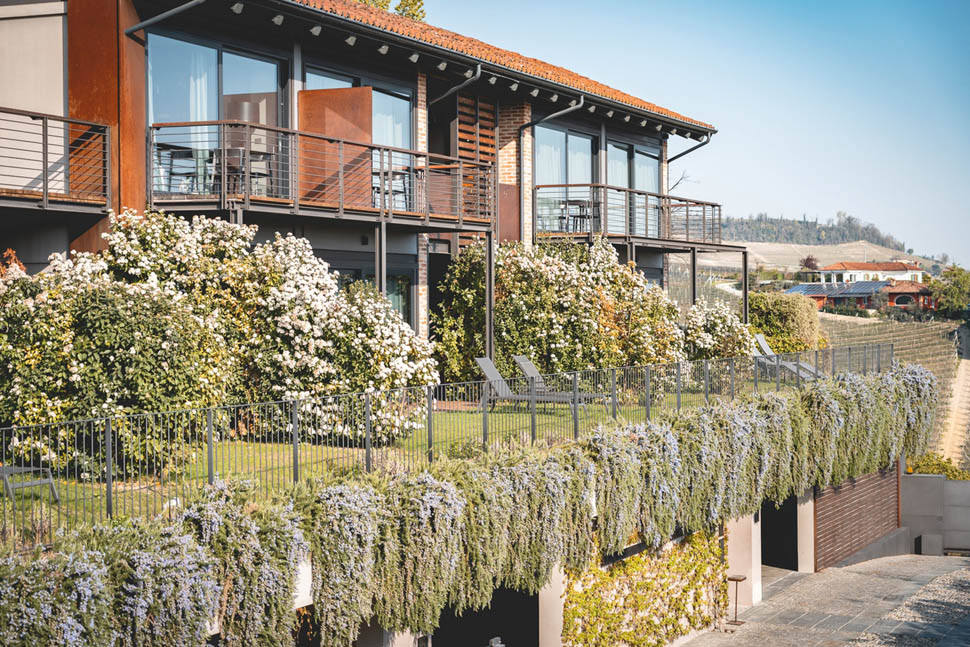
Upon entering, you expect the usual hotel with staff “maps in hand” and check-in in automatic mode, but no-in the space of two minutes you realize that perhaps they have invested here in interaction as well as time optimization. It's the right place to stop and breathe between stress-relieving glimpses and slow meals: unhook the clocks from your wrists, the hurry fades along with the morning fog and gives way to a wide-angle green that oxygenates the eye.
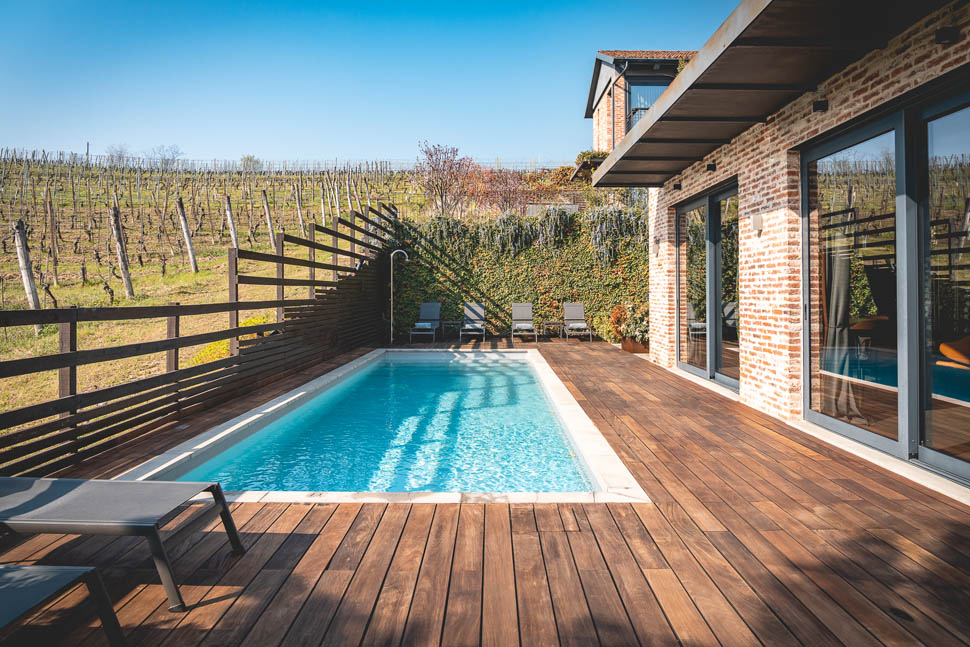
Couples buzz around the “Langhe Style”spa, epicenter of natural hazelnut oil and local grape treatments; the lobby communicates with a mini-enoteca stocked with select labels, so that the welcome already seems like a wine tour of area wineries. But why Arborina has something different to tell about this remnant of the area is not measured by the mere yardstick of seasonal visitors. Rather, permeating the spaces of the Rossana De Gaspari-led facility is a zen-like harmony in keeping with the ecosystem around it.
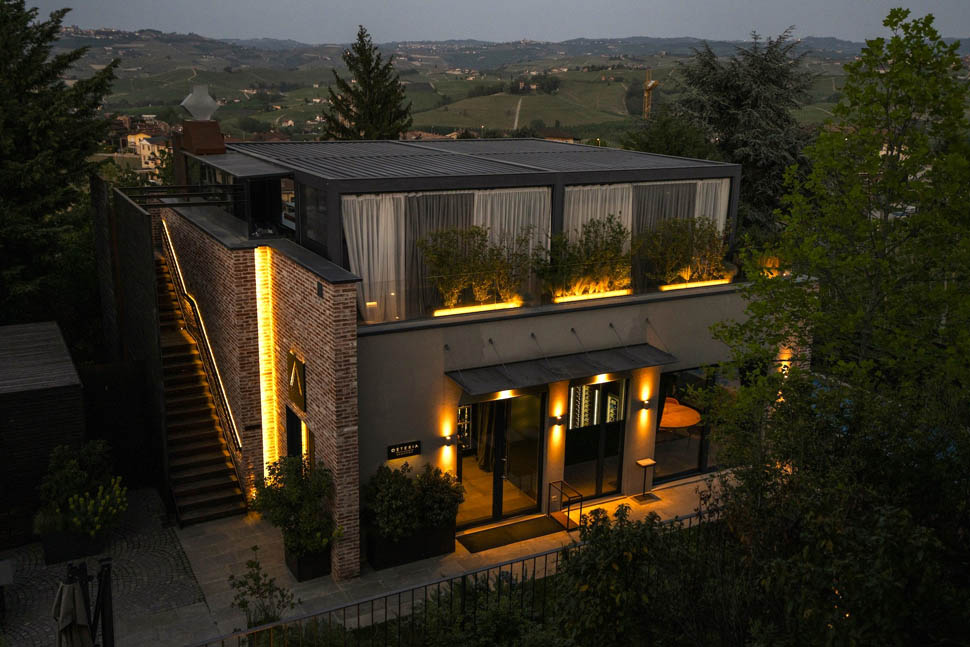
Within two days the memory of city noise evaporates and something other than the rampant frenzy of reminders on smartphones enters the auditory radar. Hunger returns, hunger for travel. And chef Fernando Forino's menu seems to have been created specifically to satiate it, pulling the strings of a discourse that tightly ties his Campanian birthplace with regional scouting.
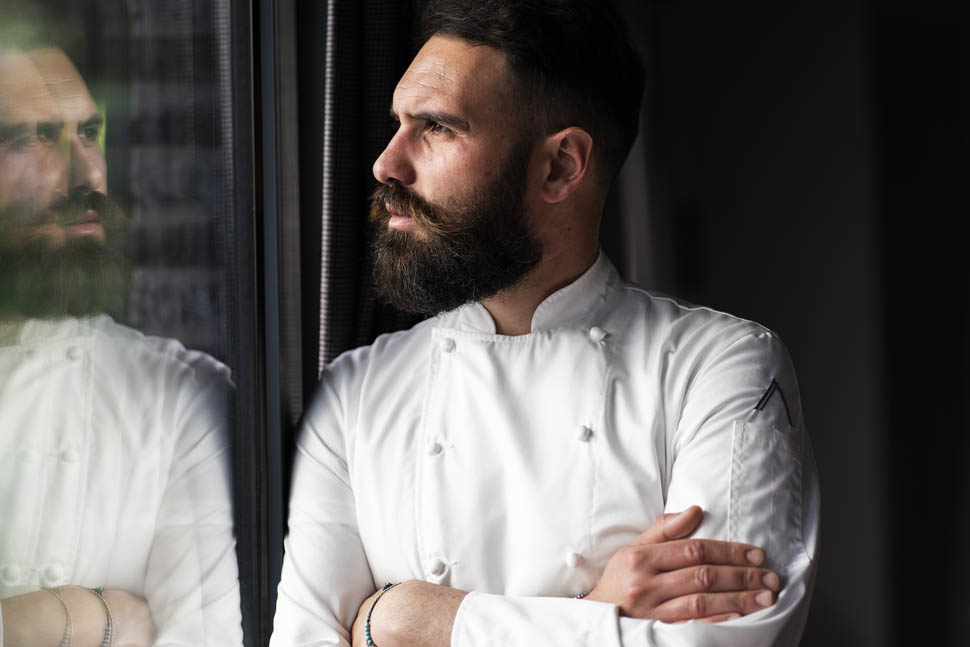
Chef Fernando Forino and the relais restaurants
"Technique does not mean exhibition: research makes sense when it adds value to the food we treat. One example among many? Fermentation: those who know how to apply it try to prolong the life of first fruits by avoiding waste, not to ride the hype of the moment. If the method remains confined to the show enclosure, taste is lost along the way: we chefs should achieve the opposite result, keeping the customer and the environment in mind." We were struck by Forino's architecture of thought, which in taking it apart rests on a solid foundation of contact with the material: at the table the ingredient comes to you clear, without sending the taste buds into confusion.
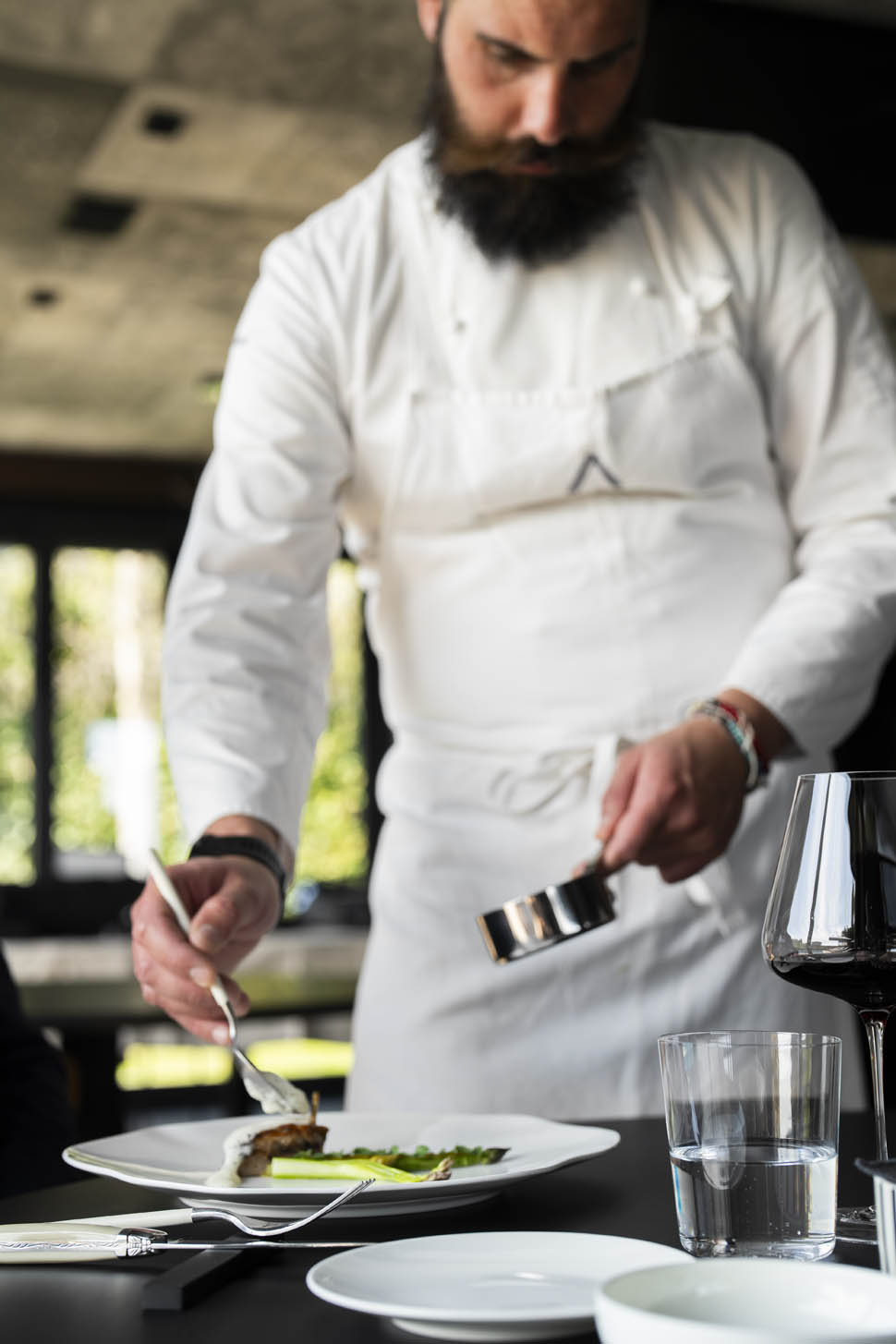
It is true both in the Bistrot The Lab, with the agnolotto del plin with a pulpy soul and the green anchovies to be unwrapped, and in the gourmet Osteria Arborina, where even the Senza Regole itinerary (the most challenging in concept and structure) revolves around the pivot of legibility, dodging overtly abstruse creations. It is precisely in the healthy obsession with the product that the prodding of Nino di Costanzo, one of the chef's debut mentors, strong from various interludes in Italian and foreign gourmet stables (just to rattle off a few names, from Anne-Sophie Pic to Michel Bras and Marco Pierre White, via Berton and Aprea, to Borgo Santo Pietro and Castello di Reschio) is grasped. The outcome is a cuisine “that I certainly would not call ‘Campanian’ in the strict sense, since it assimilates international cues while trying to unite pieces of the world on the plate.”
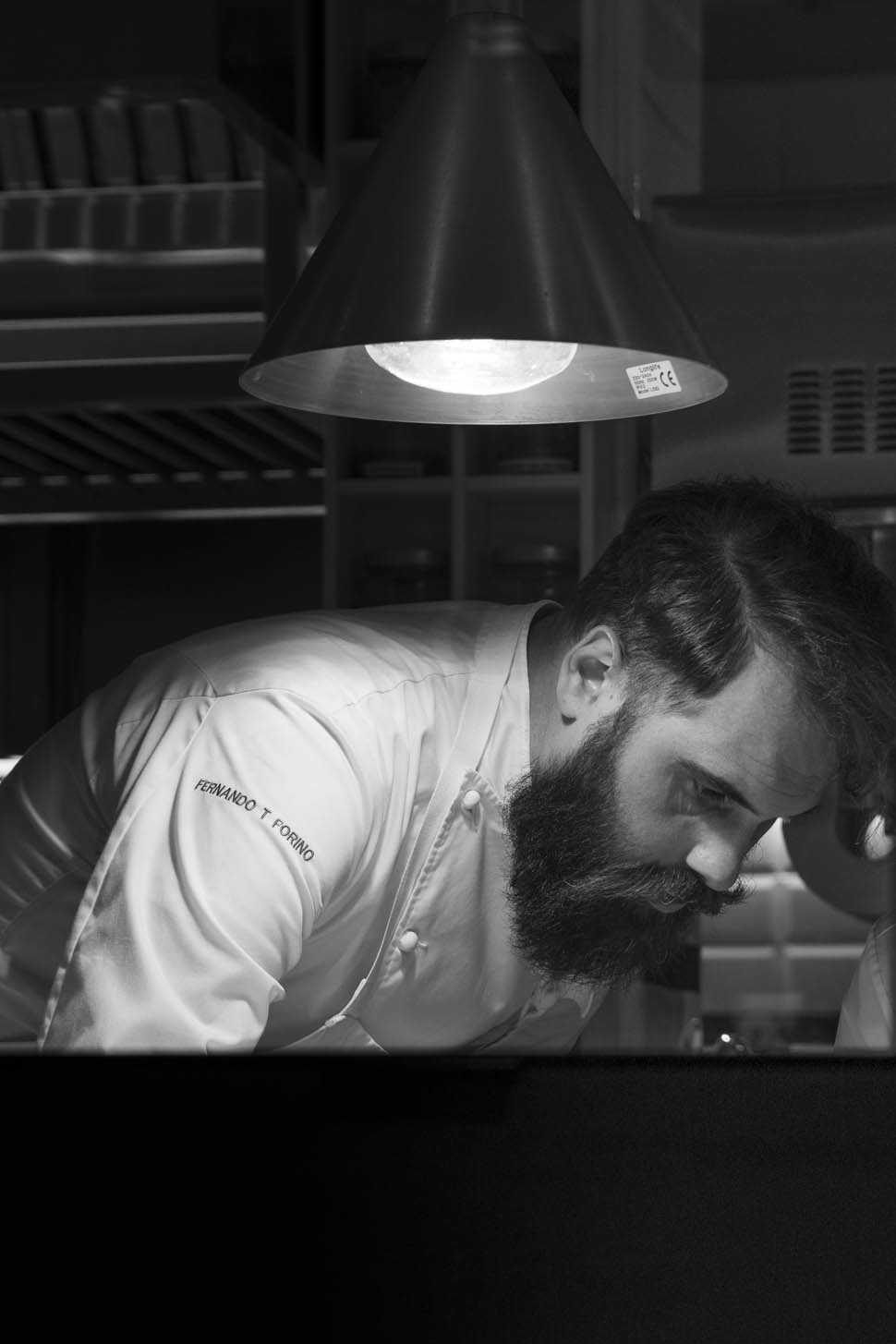
Perfume as a preview of the tasting, omnipresent to stimulate the nostrils; vegetables that from being extras become prima donna; the almost Nordic styling of the disjointed courses, which the guest draws from time to time in total autonomy. At Arborina's, a “smart dining” practice prevails that hits the target of accessibility, aided by upstream study and the consistency of the result.
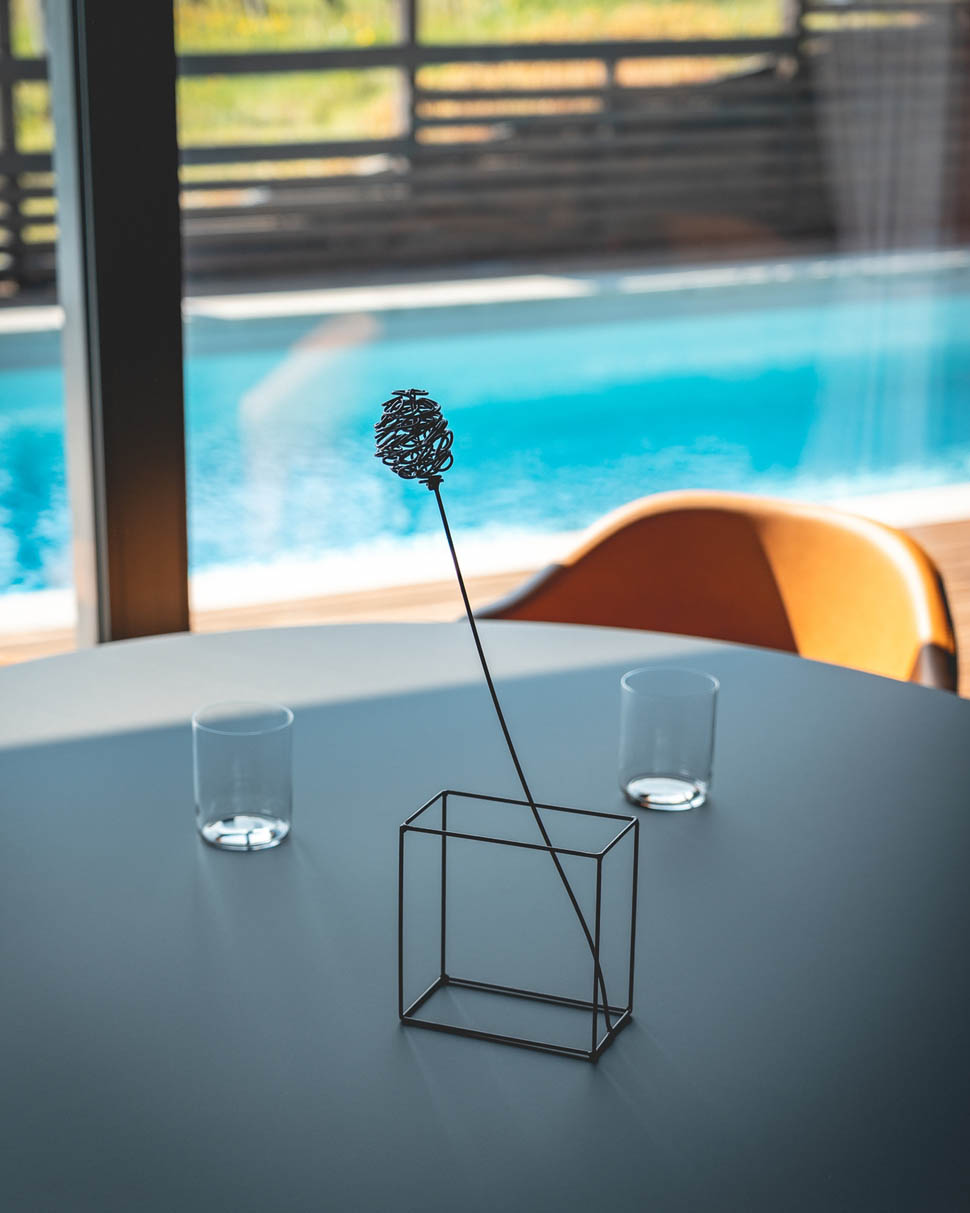
Experience the relais, from The Lab to the suites
You can enjoy the lazy day as a relaxed traveler, or you can try to unearth those little local pluses that will turn your stay around. It starts with breakfast at The Lab , which, alongside the usual espresso toast and eggs Benedict, pulls welcome alternatives such as vegetable quiche, Langa salami and salmon trout out of the hat; for the die-hards of waking sugars, the pairing of hazelnut cake and hot chocolate remains valid. What emerges is a sort of Langa variant of the Finnish “hygge”, with the restaurant looking like a transparent glass shelter suspended over the countryside.
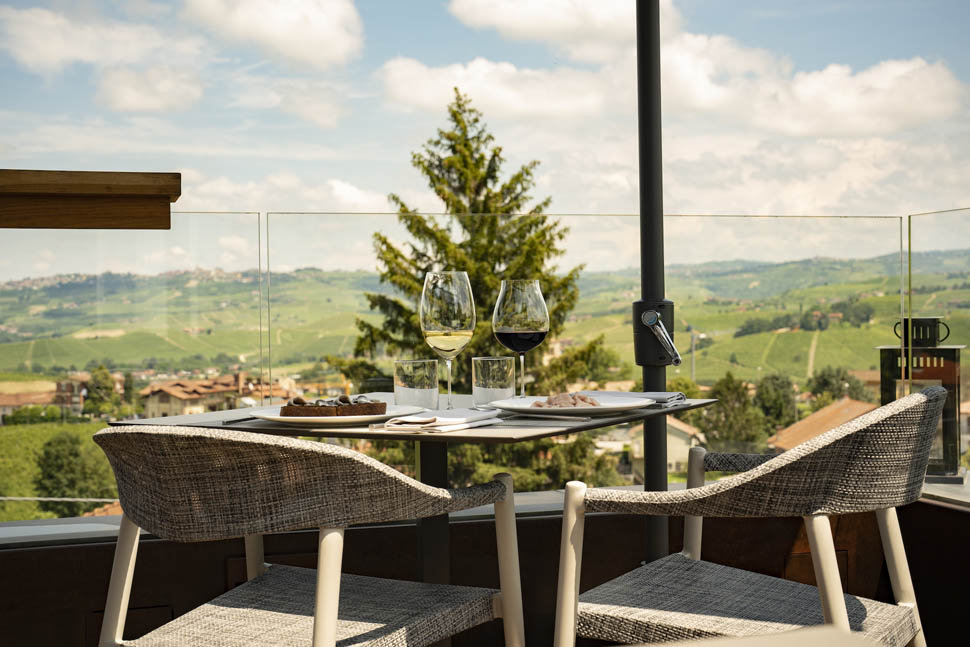
One gladly returns there after an e-bike excursion, an “Arborina massage” in the spa with four combined fragrances or-why not-a visit to La Morra, a village with the record-breaking height in the surrounding area to capture the checkerboard of vines from the lovely belvedere. On the lunch menu a series of proposals that, while swearing allegiance to the mother recipe, give added spur to the presentation. So Vitello Tonnato, Insalata Russa and Agnolotti mantecati in cremina butter and sage; in return, the pretext to order a Barolo from the 650-label cellar is provided by the Faraona rosto con asparagi, while dessert makes up for freshness with a Lemon Tart with a discreet citric pat.
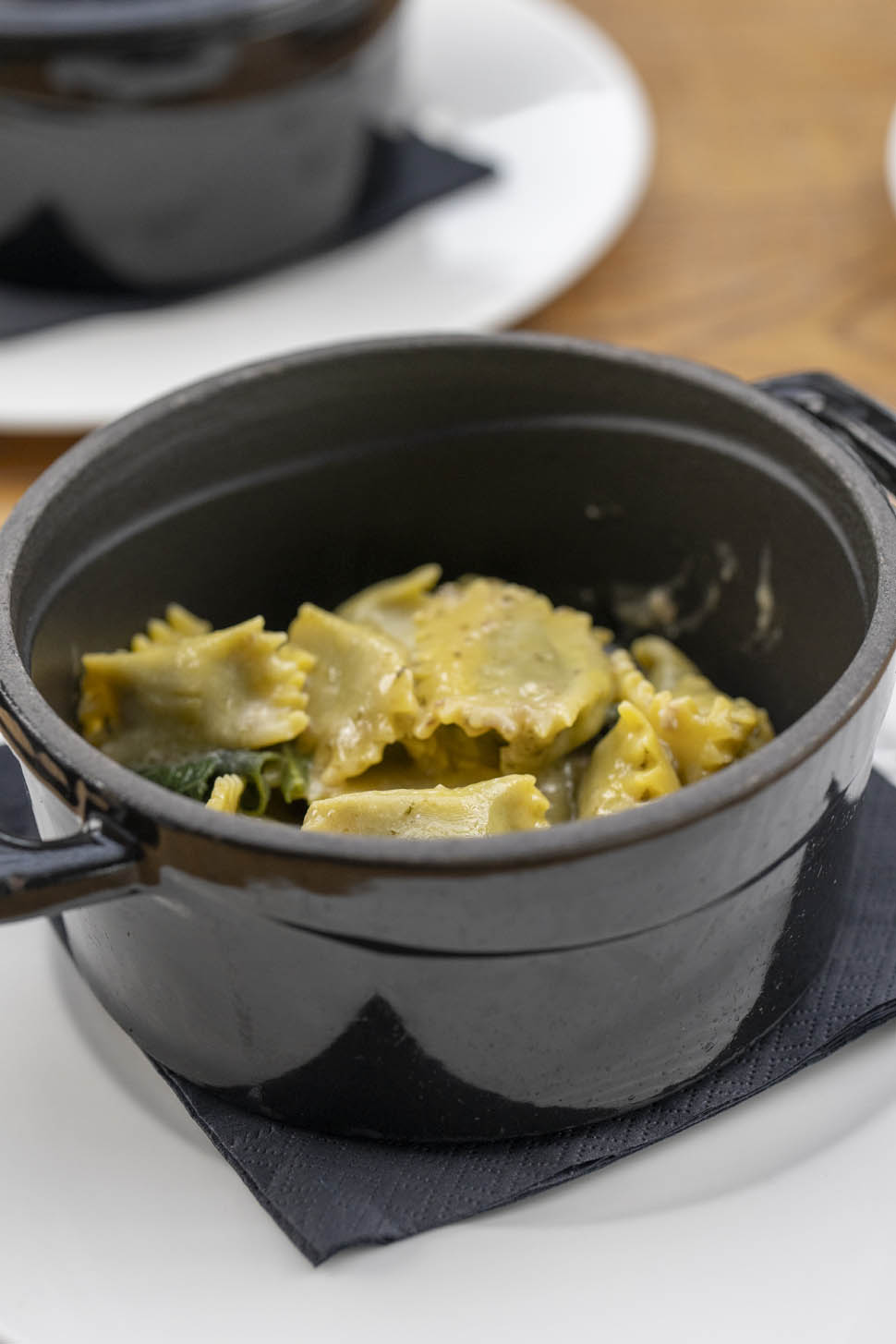
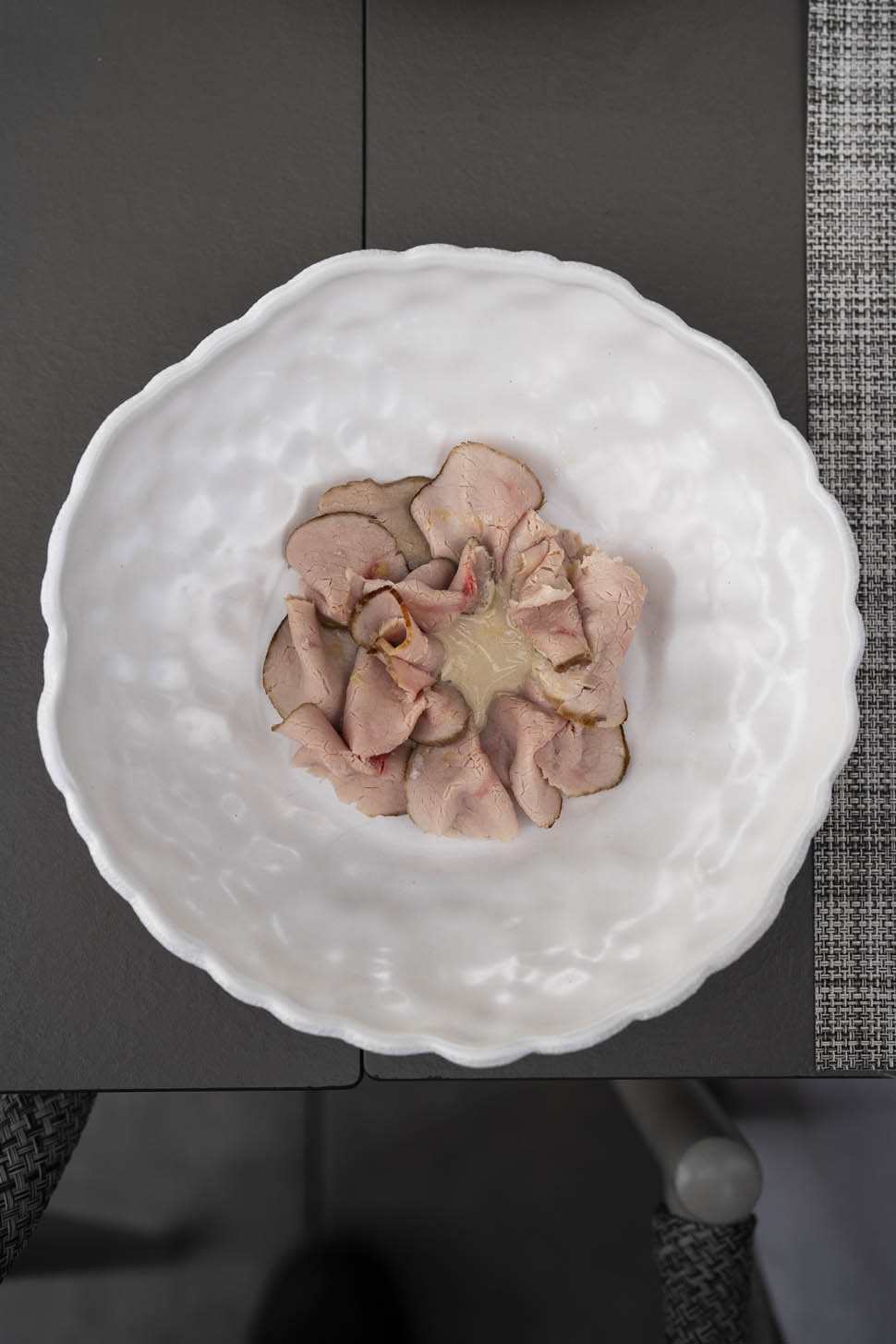
"At The Lab we wanted to condense Piedmont into 10-15 free a la carte options. It has an important function in closing the circularity of the Relais (dishes vary rapidly adapting to seasonal sourcing cycles, ed.) with a modern imprint no less than genuine," explains the team, which has always been accustomed to minimizing surplus, plastic and energy consumption. Worth highlighting is the variety of the room service, destined to introduce another leading theme: the indoor-outdoor connection, as the suites (which have just undergone a significant “refresh”) host wooden furnishings and beauty sets with botanical mixes from the Langa, themselves mirrors of rural biodiversity.
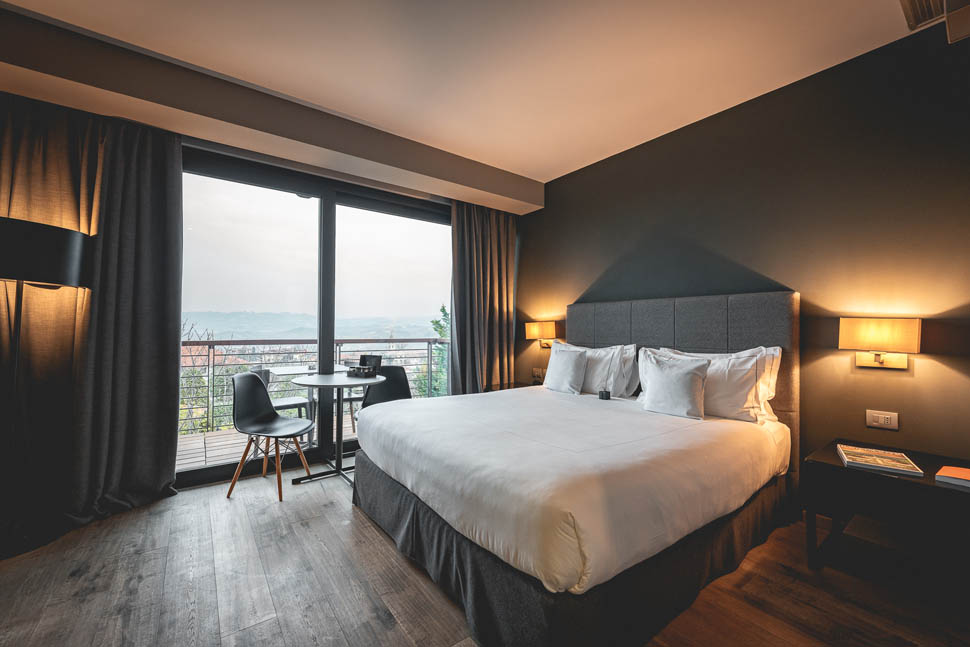
Osteria Arborina: the dining room, the service and the menus
Here we are at the “Osteria”; the building in which The Lab stands, in fact, on the first floor welcomes visitors ready for a close encounter with the chef's latest experiments. Let's start with the basics: open brigade, a handful of contained place settings, staff finishing and introducing live courses by taking turns coming out of their “safe zone.” Service flows nimbly thanks to widespread synchronicity, sometimes lingering in the middle stages of the experience to give the meal breathing room.
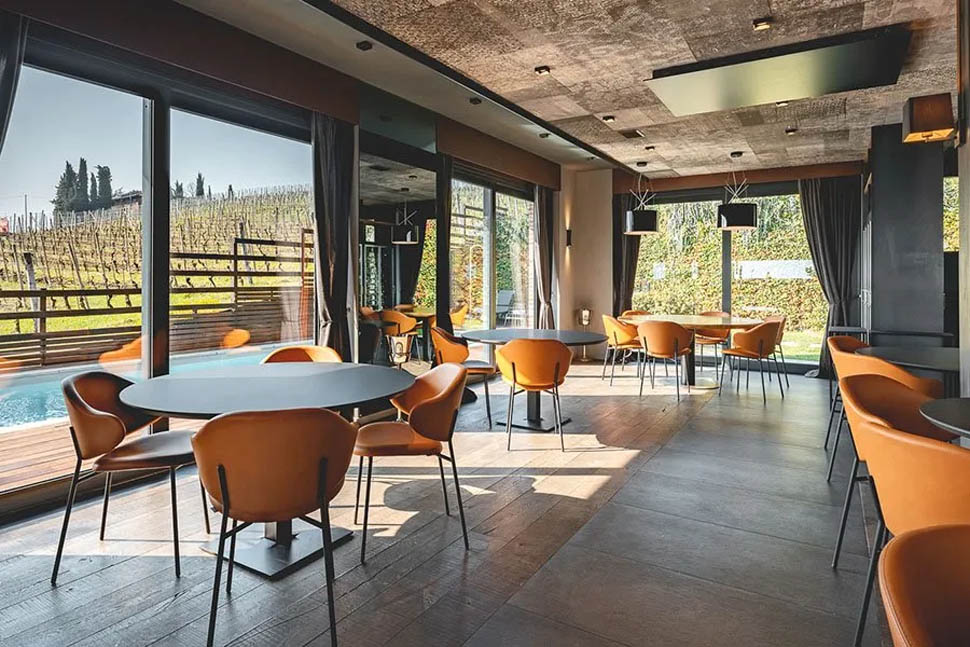
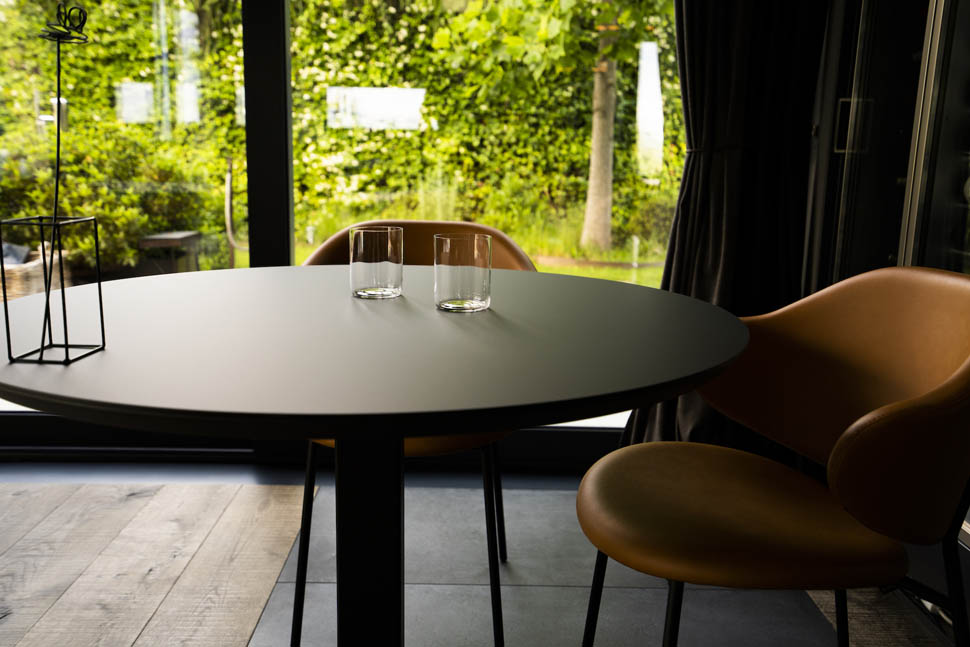
The chameleon pairing by sommelier Simone Gaiotto, capable of keeping up with the gradations of intensity of the highlight dishes, also goes in this direction. This is confirmed by the pairing of 100% native references that we sampled in the menu “Distances That Meet. My vision of Piedmont"(7 runs at €95, with the option of selecting 2-3 for a reduced tasting); not a given, aiming straight at proximity companies from entrée to epilogue.

Similarly, the intuition of serving an excellent Piedmontese oil with a pagnottina of flours from Mulino Sobrino stands out, skipping inflated central-southern realities (on the other hand, given the quality of the workmanship, the assortment of leavened goods would deserve to be expanded to benefit seconds). The "up level" itinerary, Senza Regole, is well worth the 10 passes at €125, subject to the easy solution of 5 acts at €75.
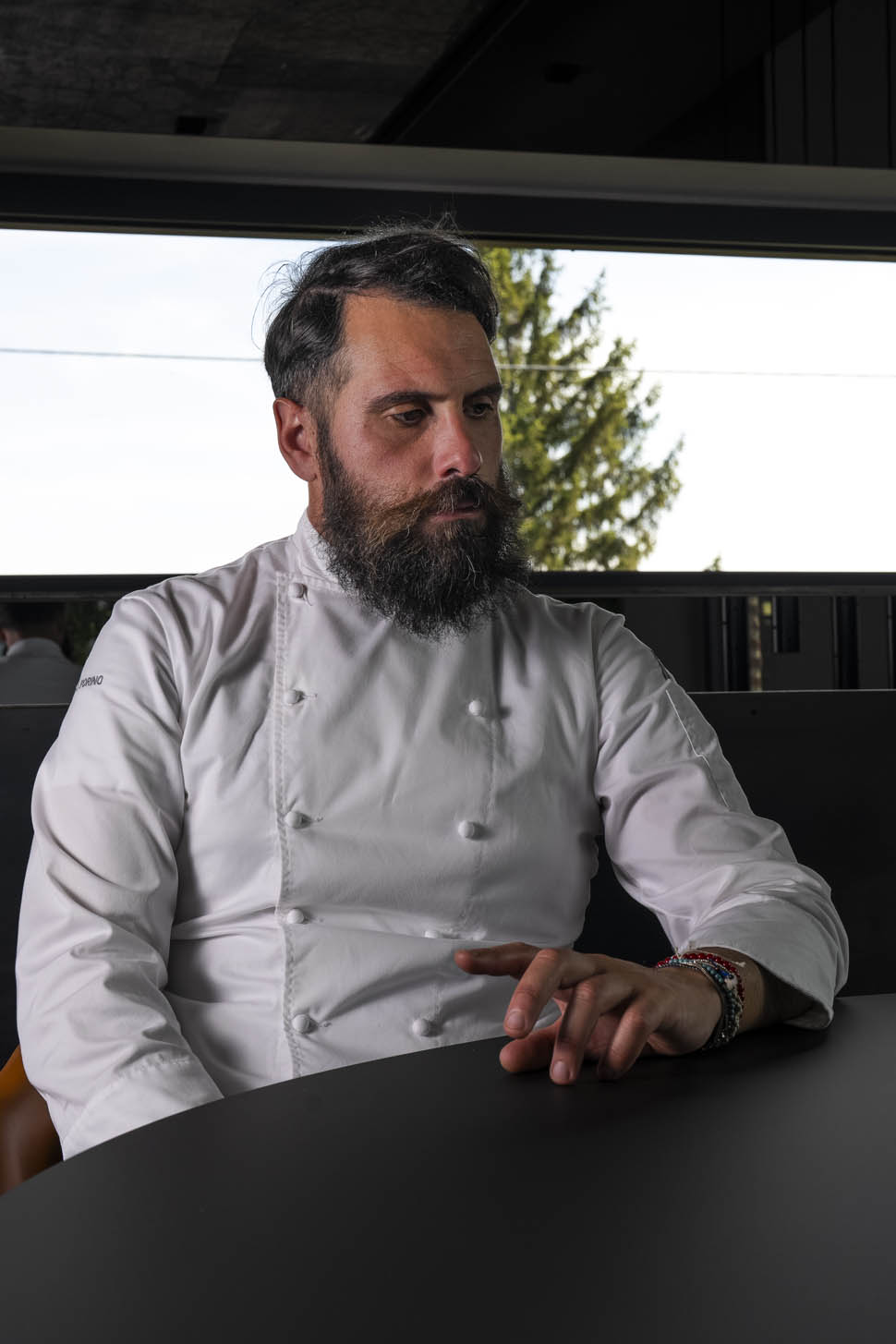
The Dishes
Compared to the average homologated finger food, Forino's leaves a lasting memory. Such is the case with the Chicken liver with Marsala gel-a crossover between finanziera, which wants the offal stewed directly with fortified wine, and the work on the entrails conducted by the chef in Tuscany-or theArancino alla pizzaiola, made incisive by the tapioca flour insert.

The baptism with Piedmontese staples has the ringing color of Green Anchovies. Before us, a corolla of total green parsley: of the fish not even a shadow; in the mouth, a lunge of unexpected savoriness. “It's actually a curly salad dressed with a garum emulsion made up of anchovies' heads and bones, plus an anchovy katsuobushi powder," the chef explains. The marinating is close to 50 days, and therein lies the mystery of persistence! Except, in an amusing role swap, the protein takes on the guise of the side, with the anchovies arranged on a creamy risotto tartlet to reduce the garlic to a quiet background voice.
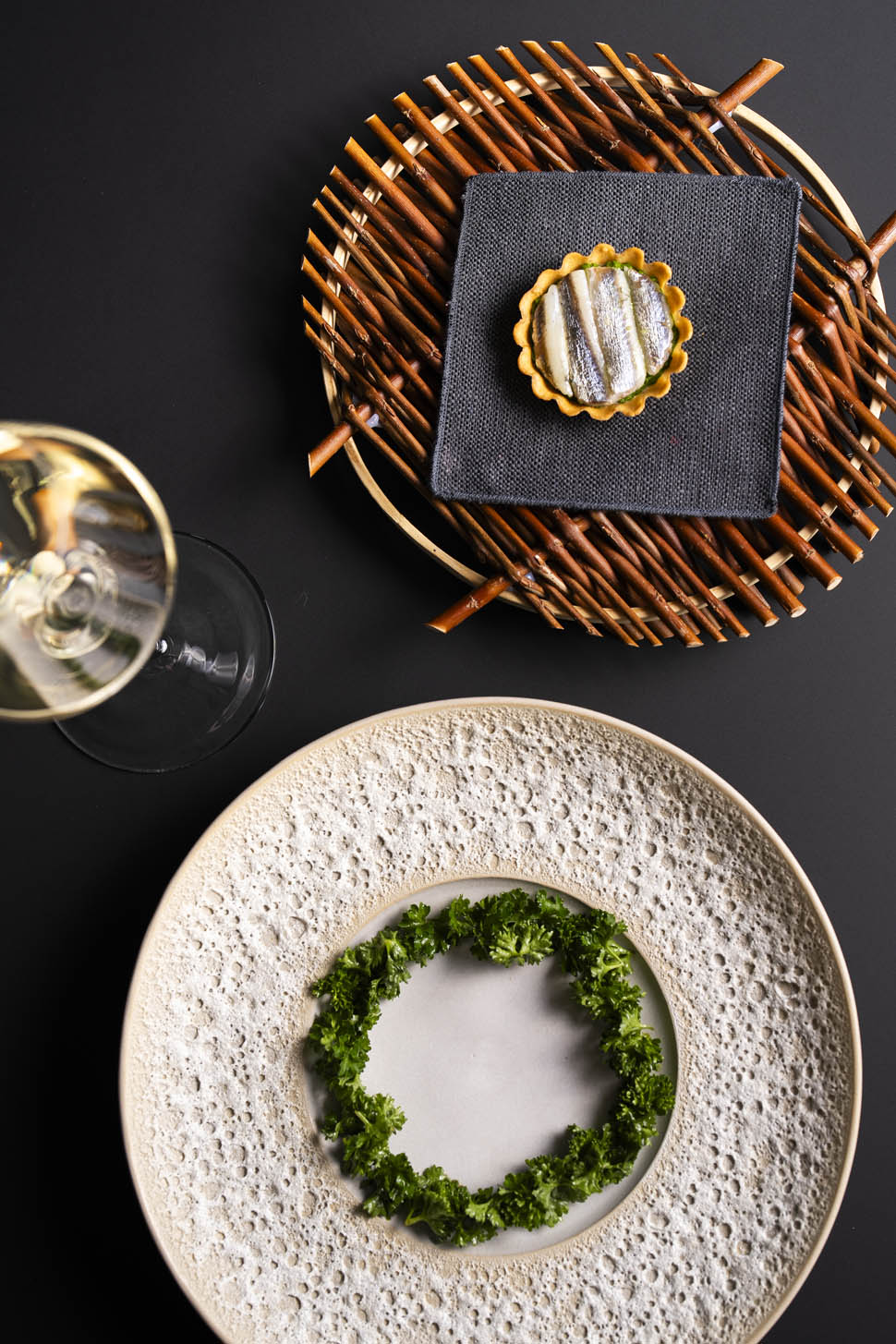
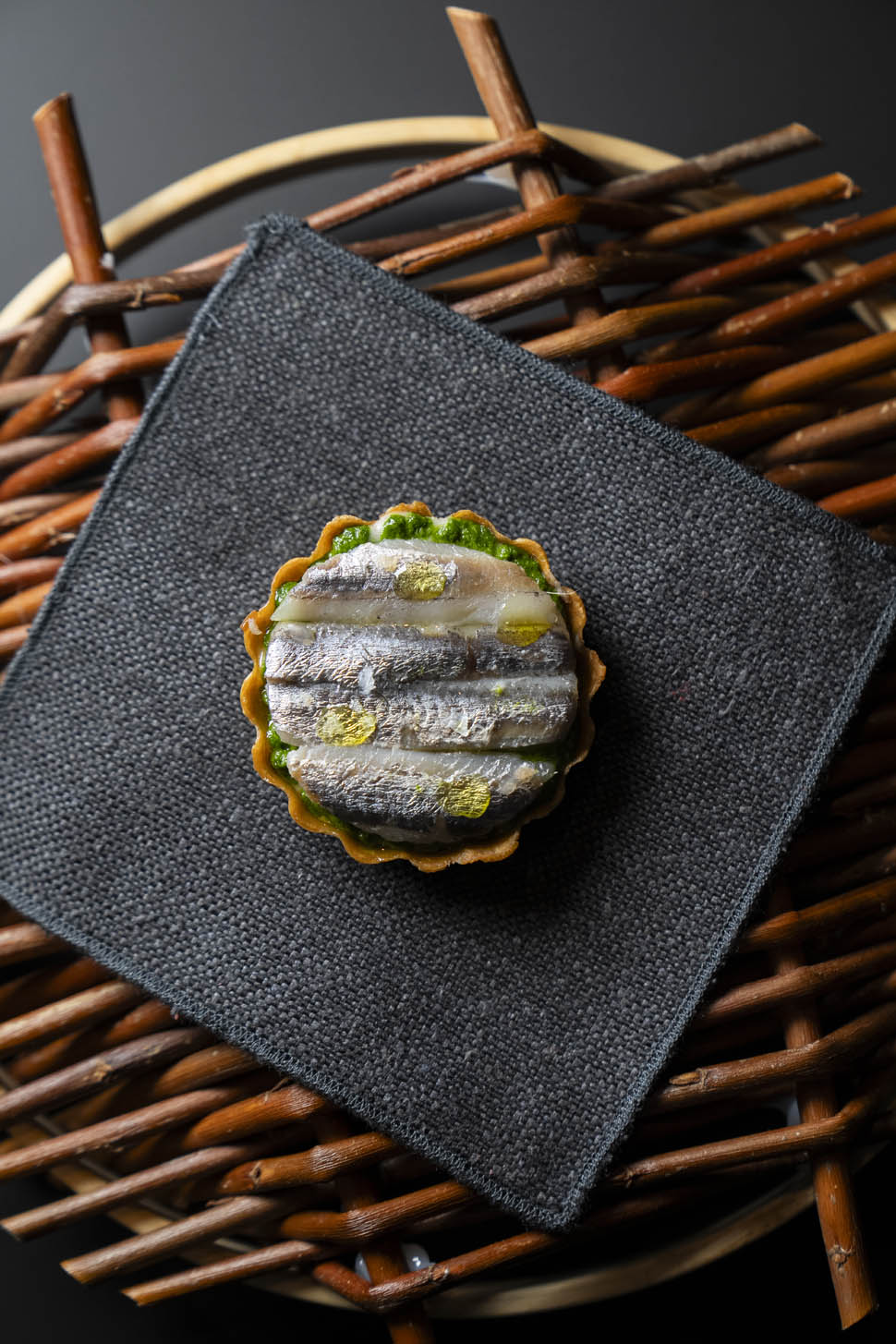
It is a brazen, multifaceted umami, that of Riso Buono with fermented Parmigiano crusts, oyster sauce and crumbled bean wafer: the pinnacle of no waste, from the reuse of leftover cheese to the redemption of the “poor” legume. The goal, “tosum up Neapolitan pasta e fagioli and panissa vercellese (a borlotti risotto usually blended with red wine, ed.)in a spoonful .” Intruded only in appearance, the mussel reduced to mousse, which accentuates the perception of the “sixth taste,” already propelled by the controlled maturation of the crusts for 15 days in a homemade whey of milk, vinegar and salt.
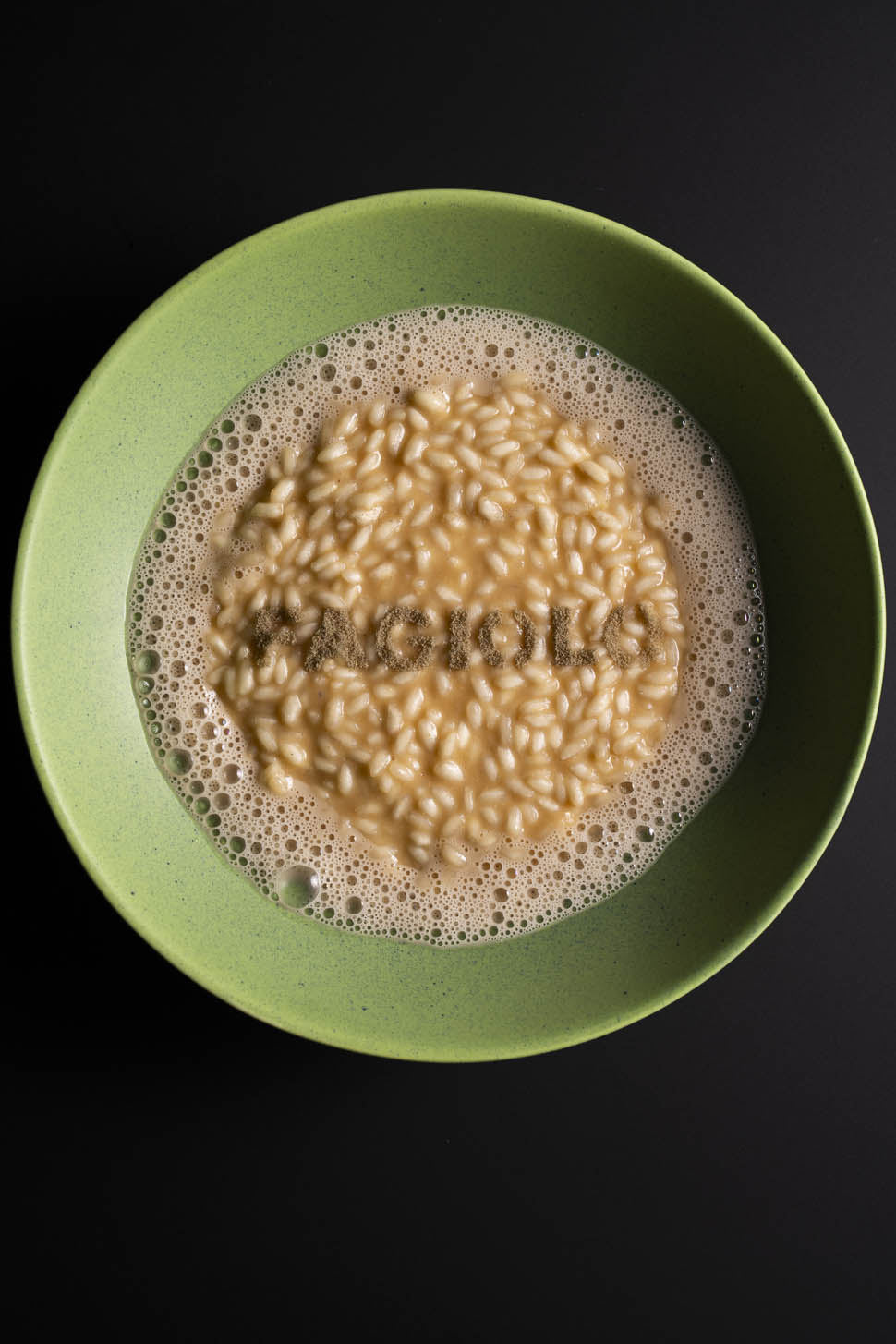
The herbaceousness returns to the charge in Tubetti with a “100 percent parsley” extraction that (against all odds) holds its own against the assertive bite of the eel, macerated in a teriyaki sauce of its own residue and then passed through yakitori. Extending the smoky trail is a bacon sauce to which a variety of fat transformation processes lend a velvety envelopment.
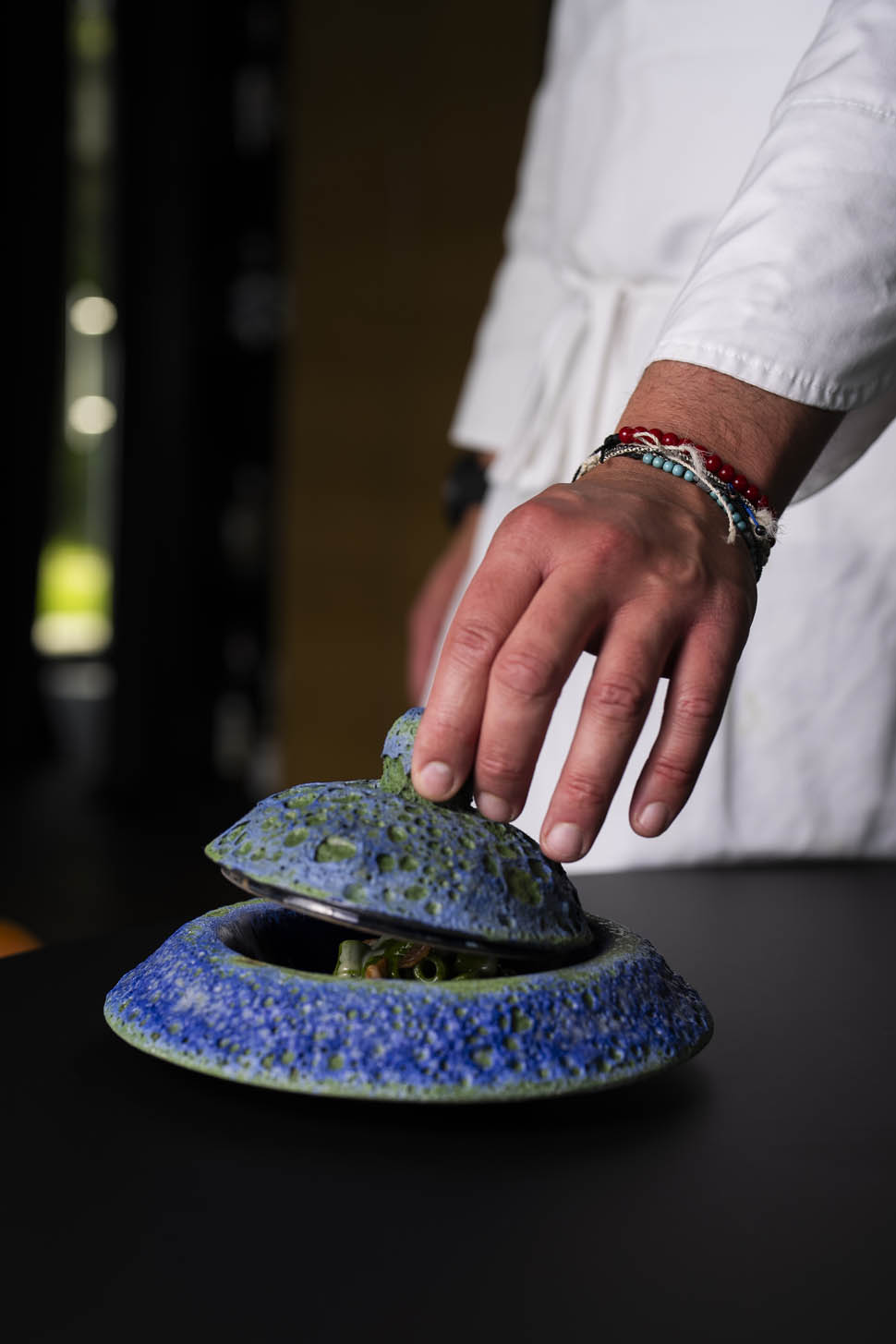

From Sunday barbecue to spice market is a moment: just enough time to change pasta halfway through. The carbohydrate parenthesis closes with a curried Linguina juxtaposed with a slim version of bagna cauda, where garlic is brought into line by repeated bleaching in water and milk. First the Asian suggestion, then the familiar scents accentuated by a wild garlic oil extraction.
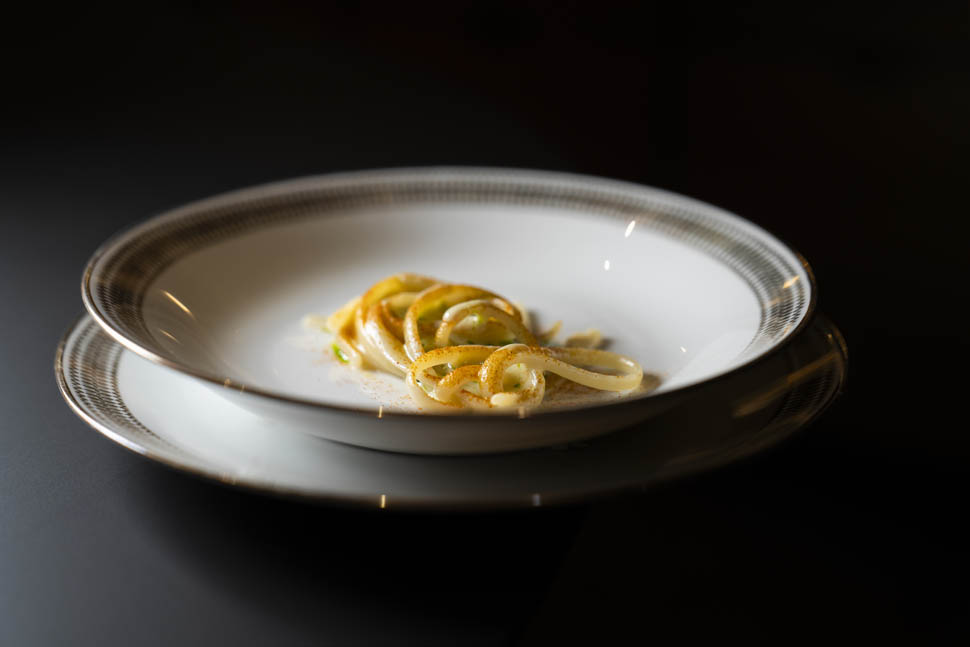
Clean break: can a vegetable take center stage behind the seconds? It succeeds, surprisingly , in the marinated fennel in shirodashi vinegar, with a prickly aspex that relaunches salivation on the fly. Indulging and contrasting it at the same instant is a sour chocolate sauce, made from caramel, Xeres Iberian vinegar and 67% fondant. Slap and caress at the photo finish, in view of the meat.
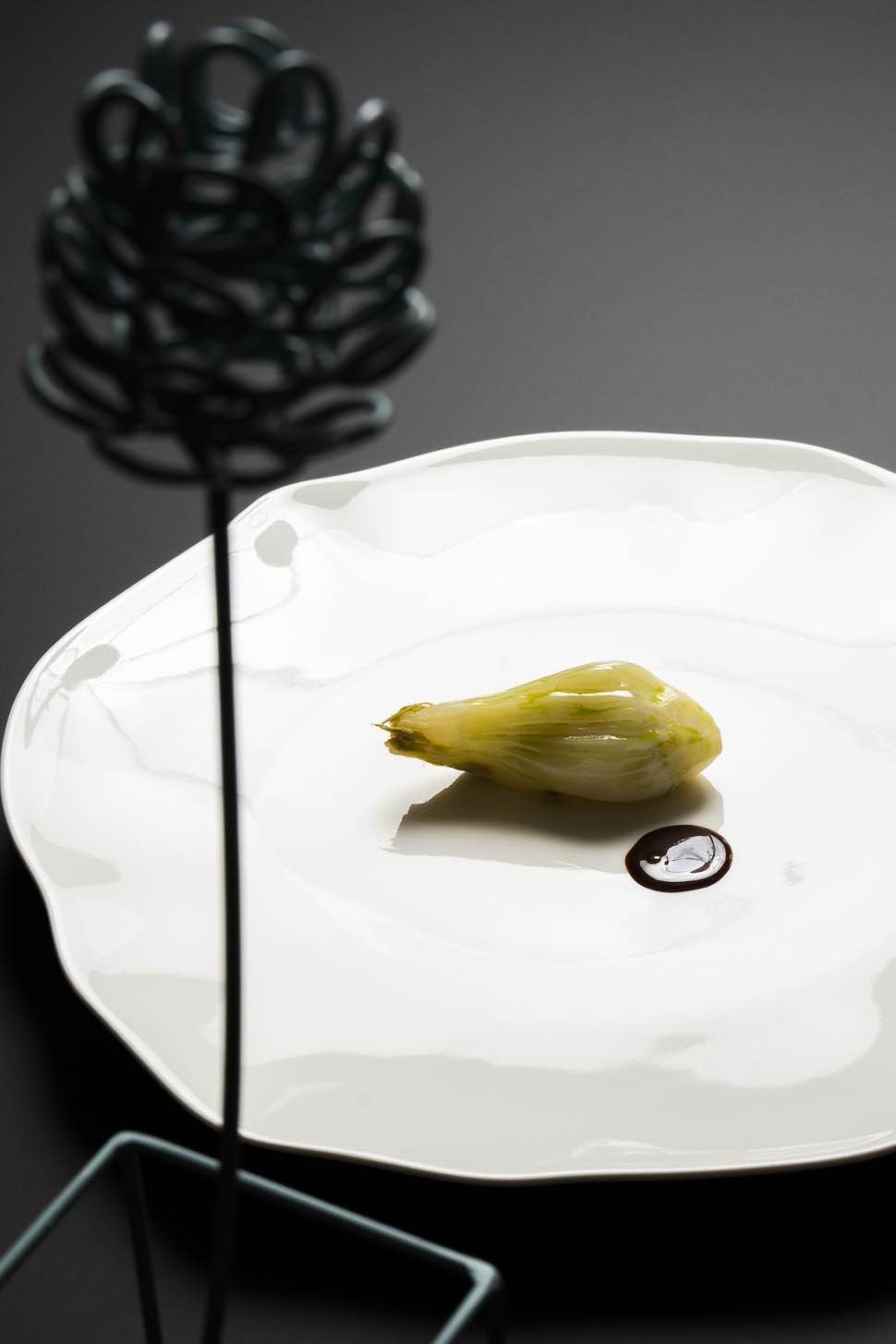
More accommodating is the Quail stuffed with dates and asparagus in a plurality of textures (in oil, in salt, in the form of fermented mousse with lemon, and as carpaccio au naturel).
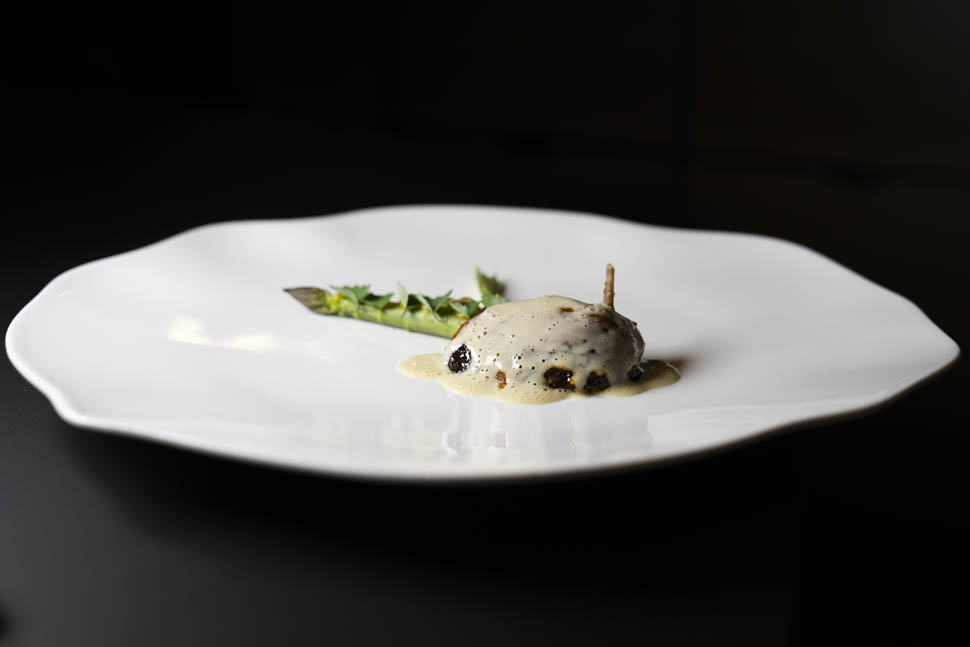
Behind the desserts is passionate pastry chef Giulia Bucci, creator with Forino of a “sweet not sweet” that anticipates the credits. “In Colombia I happened to discover a plant-based cheesecake with an incredible texture and flavor,” the chef confesses. Intuition replicated by bringing to life a “faux cheese” made of cashews and cornmeal; on the side, a mini-apple cake and a salad of apples and cooked must. All notable for its affinity to the dairy product.
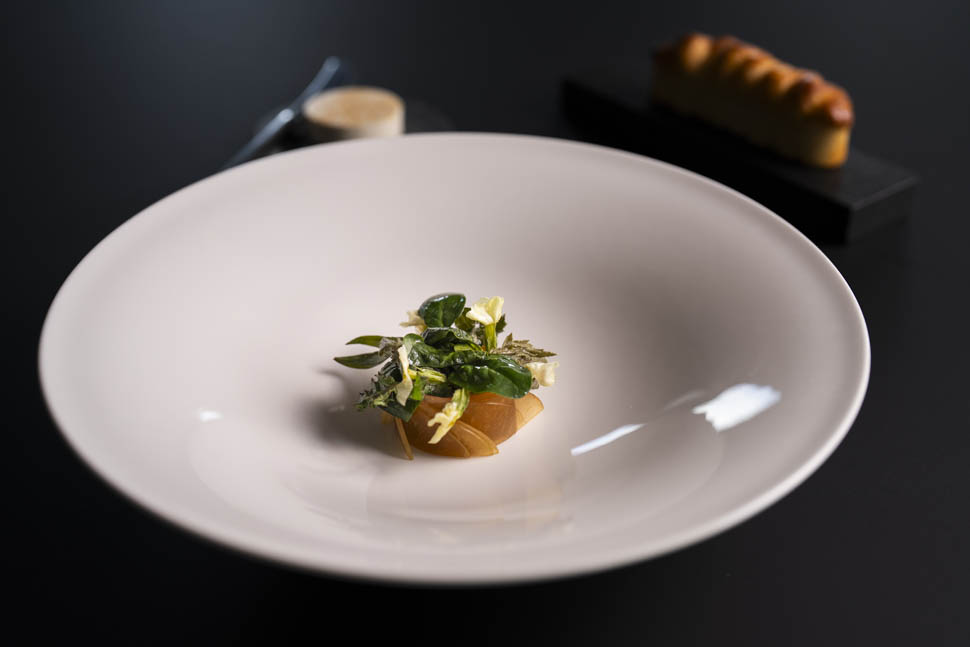
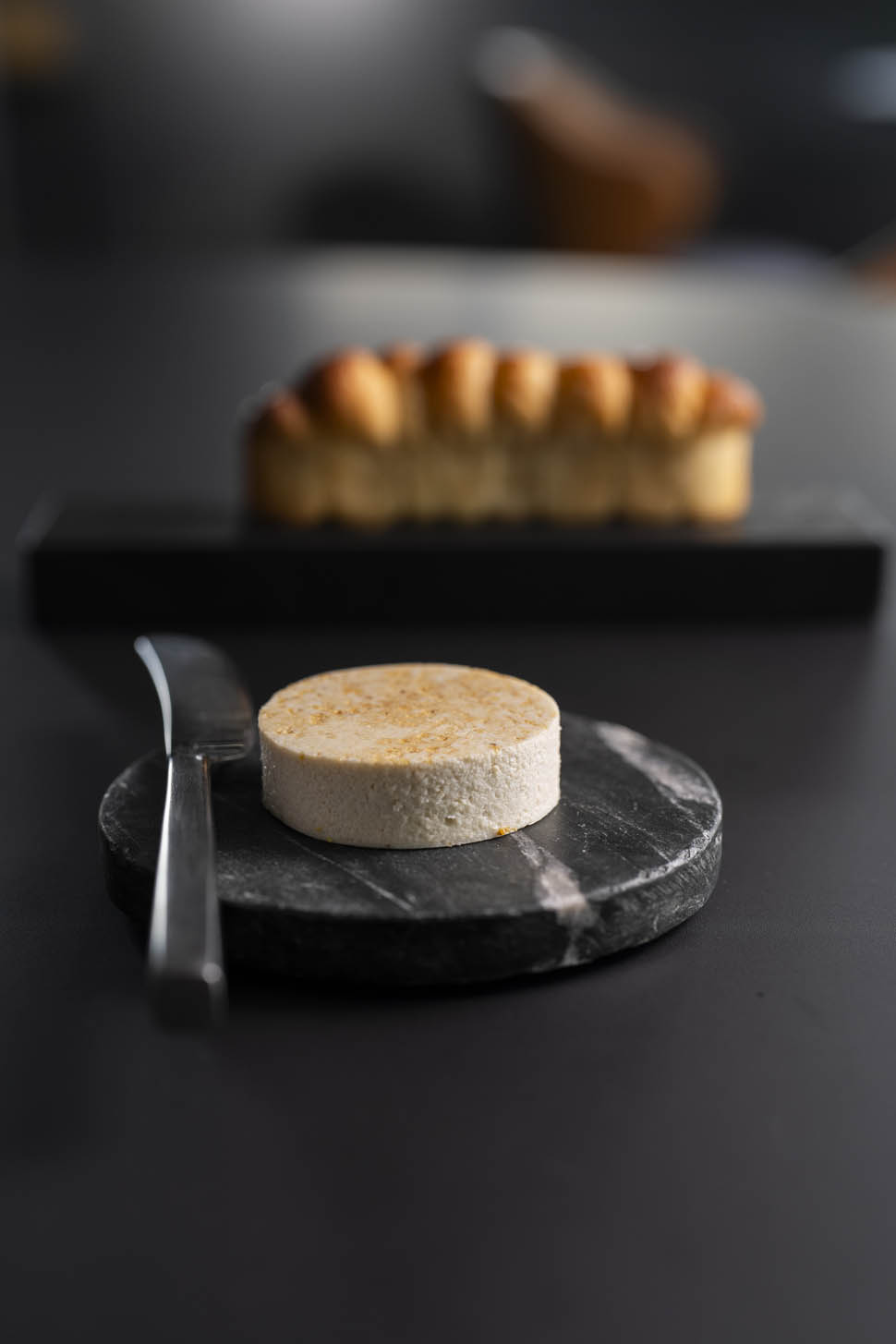
Closing is the Steamed Pineapple breaded with lime and pink pepper, to be bitten while interspersing the bite with a sip of tepache, “ a Mexican drink created to reuse the skin of the fruit.” Part Latin souvenir, part firework to fix our foray into the Langhe in memory.
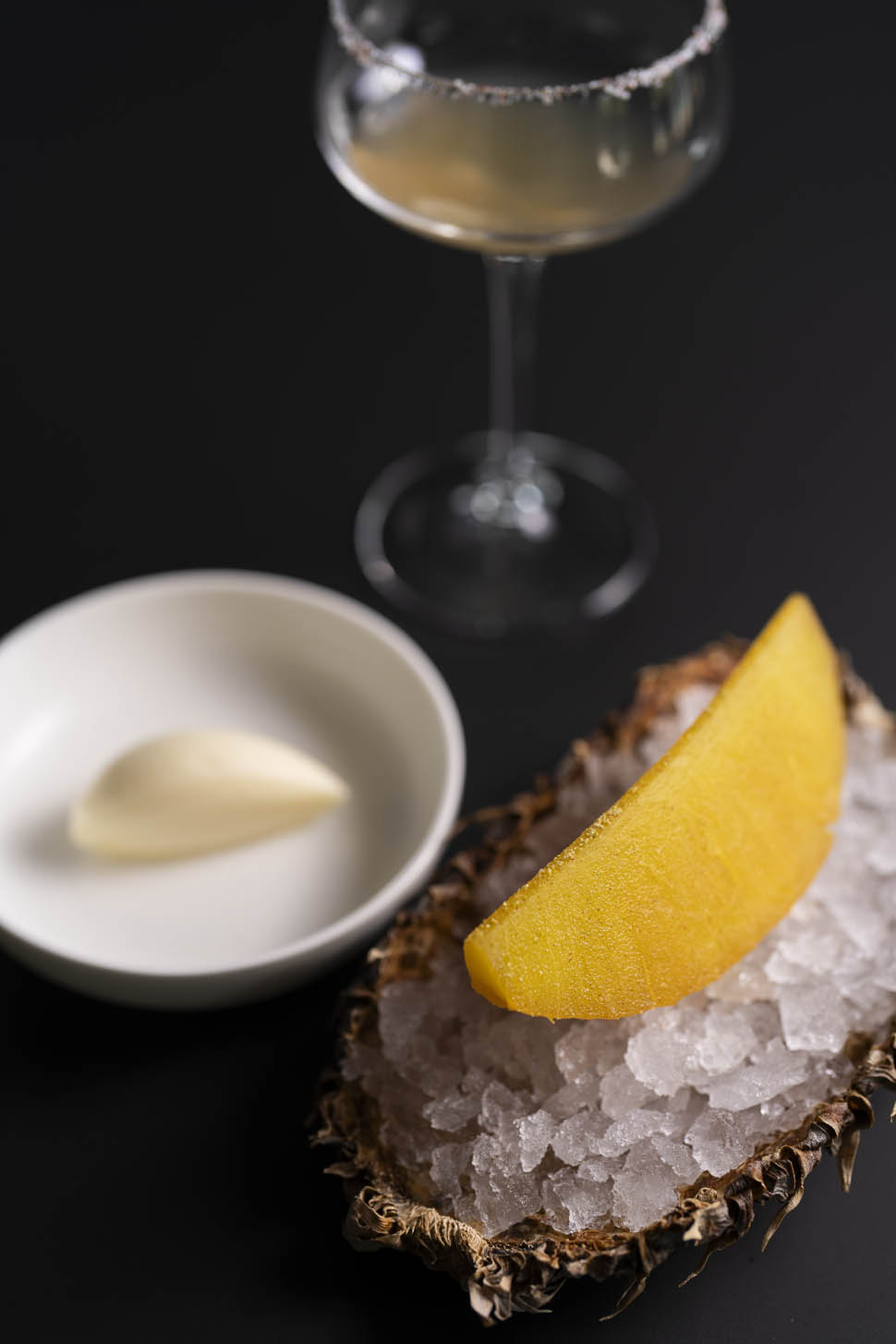
Contact
Arborina Relais-Osteria Arborina- The LAB
Frazione Annunziata La Morra, 27- La Morra (CN)
Phone: 0173 500351
